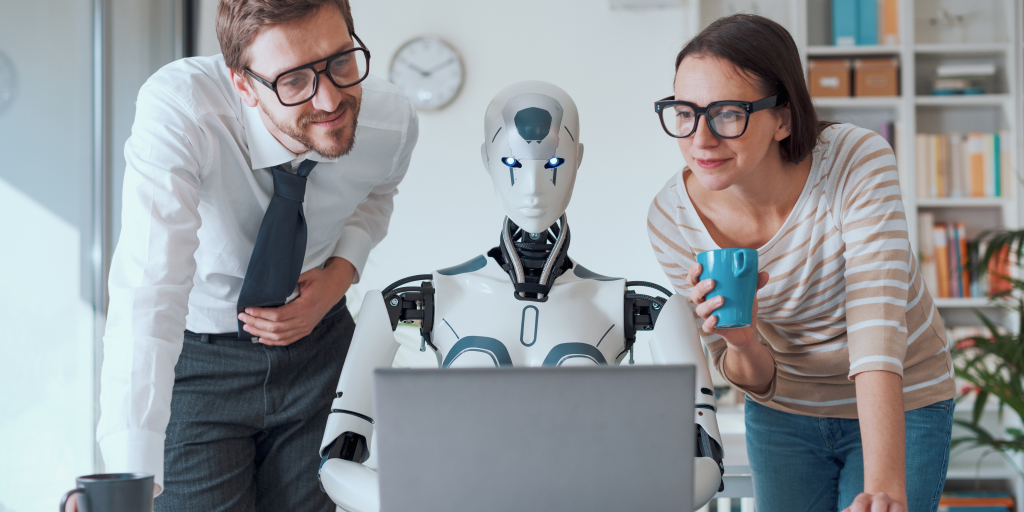To understand this shift, we interviewed Raj Mehra, CEO of NovaCore AI, a tech startup pioneering collaborative AI solutions for enterprise teams. Here’s how he believes Collaborative AI is reshaping the cognitive fabric of modern organizations.
What is Collaborative AI?
Collaborative AI is a system designed to work with humans in real-time. Rather than functioning independently or executing pre-defined rules, it actively contributes to meetings, brainstorming sessions, planning, and decision-making. It becomes a sort of “silent team member” – offering suggestions, flagging inconsistencies, surfacing data, and even challenging assumptions.
According to Raj:
“Collaborative AI enhances human thought, not replaces it. It joins conversations, understands context, and nudges teams toward smarter outcomes.”
Unlike conventional automation, which is reactive, Collaborative AI is proactive and participatory.
The Real-Time Brainstorming Revolution
In traditional meetings, brainstorming often depends on individual creativity and group dynamics. Collaborative AI shifts this paradigm. Tools like ChatGPT for Teams, Miro AI, and Slack AI can inject instant, relevant ideas into a conversation.
Imagine a product ideation meeting where a team struggles with naming a feature. Collaborative AI can propose 15 options in real-time, based on previous product names, current trends, and semantic sentiment. It keeps momentum alive and sparks new directions.
Raj adds:
“We’ve seen AI brainstorm with designers, writers, and engineers. It opens minds, especially when humans hit creative fatigue.”
Changing Team Dynamics: Equal Voice, Reduced Bias
Another area where Collaborative AI shines is equalizing team input. In meetings, louder voices often dominate, and quieter teammates may hold back. AI levels the field.
Meeting assistants like Zoom AI Companion or Microsoft Copilot summarize everyone’s contributions. They ensure ideas from introverts and remote team members are heard. Over time, this leads to more inclusive and higher-quality decision-making.
Collaborative AI also reduces cognitive bias. It surfaces contradictory viewpoints, alternative data, and minority opinions that human groupthink may overlook. Teams that rely on Collaborative AI make better, more informed decisions.
Real Tools Powering Collaborative Thinking
Here’s a snapshot of tools driving this transformation:
| Tool | Purpose | Benefit |
|---|---|---|
| ChatGPT for Teams | Brainstorming, content, strategy | Fast ideation, co-writing support |
| Slack AI | Summarization, smart replies | Keeps conversations organized |
| Miro AI | Whiteboarding, ideation | Connects ideas visually with AI |
| Otter.ai | Meeting recording & summaries | Transcribes and organizes insights |
| Microsoft 365 Copilot | Workflow AI | Embeds AI into Word, Excel, Teams |
Each of these platforms allows AI to be an equal participant, not just an observer.
A CEO’s Vision: The Future of Collaboration
Raj Mehra envisions a workplace where AI isn’t just helping but thinking alongside people:
“Our teams use NovaCore’s Collaborative AI agent called ‘Nova’. It’s in meetings, Slack, design sessions. It reminds us of context, raises questions, and even challenges group assumptions.”
He sees Collaborative AI as a kind of digital co-founder:
- It never forgets past conversations
- Offers insights pulled from millions of data points
- Works across time zones 24/7
When asked if AI will replace certain roles, Raj is clear:
“AI should augment, not replace. It should remove friction, reduce fatigue, and free up humans to do deeper, strategic work.”
Shaping Culture with AI
Surprisingly, Raj believes Collaborative AI can influence organizational culture.
- Increased accountability: AI reminds teams of unfinished tasks or dropped follow-ups.
- More transparency: Everyone sees what was discussed, not just those in the room.
- Less ego: Teams begin to welcome constructive AI challenges without defensiveness.
“Culture shifts from reactive to proactive when AI ensures nothing slips through the cracks,” says Raj.
This leads to fewer meetings, more meaningful collaboration, and accelerated innovation cycles.
Redefining Productivity Metrics
Collaborative AI also demands new metrics for productivity:
- Instead of hours worked, measure insights generated
- Track cross-team idea sharing
- Evaluate idea-to-execution time
Raj believes AI can help managers visualize real productivity, not just activity.
“We’re moving toward a world where value isn’t just doing more, but thinking better, together.“
Privacy, Ethics, and Guardrails
But what about privacy? Teams often discuss sensitive topics.
Raj ensures that NovaCore’s platform adheres to strict safeguards:
- On-device processing for confidential meetings
- Role-based access to AI transcripts
- Encrypted data logs
“We never want AI to be the surveillance eye in the room. It should be a coach, not a cop.”
The future of Collaborative AI will balance transparency with ethical responsibility.
Use Cases Across Industries
Collaborative AI is not just for tech startups. It’s impacting multiple industries:
- Healthcare: Doctors brainstorming treatment plans with AI assistance
- Finance: Analysts reviewing reports with AI-generated summaries
- Education: Teachers co-creating lesson plans with AI
- Retail: Product teams designing collections using AI moodboards
It offers both operational and creative benefits.
Future Possibilities
Raj predicts the next wave of Collaborative AI will involve:
- AI that tracks emotional tone of meetings
- Agents that learn individual thinking patterns to better collaborate
- Tools that simulate diverse perspectives in decision-making
He concludes:
“In 3 years, not using Collaborative AI will be like refusing to use email in the 2000s.”
FAQs
Q1. Is Collaborative AI only for large companies?
No, even small teams benefit from AI in meetings, brainstorming, and communication. Many tools are free or low-cost.
Q2. Can AI really contribute creative ideas?
Yes. Trained on vast datasets, AI can propose novel concepts, reframe problems, and combine ideas in unexpected ways.
Q3. Is my data safe with these tools?
Reputable platforms offer end-to-end encryption, data control, and compliance with GDPR and SOC2 standards.
Q4. Will AI replace managers?
Unlikely. Collaborative AI supports managers with insights and structure but doesn’t replace human judgment or leadership.
Q5. How do I start with Collaborative AI?
Begin with tools like ChatGPT, Notion AI, or Slack AI. Start small, measure impact, and expand adoption team-wide.
Conclusion
Collaborative AI is changing how teams think — not by replacing people, but by amplifying human intelligence. It reshapes meetings, improves brainstorming, balances voices, and fosters real-time innovation.
Raj Mehra says it best:
“AI isn’t just making us faster — it’s making us smarter together. And that’s the real revolution.”
In the years ahead, Collaborative AI won’t just be a tool you use. It’ll be a colleague you rely on.





